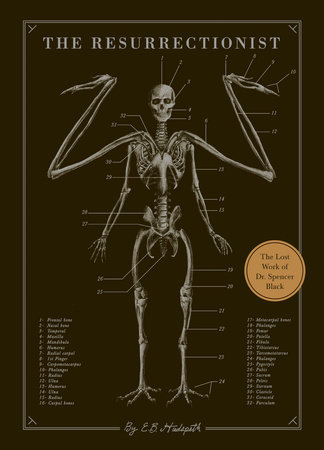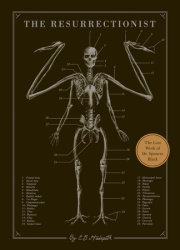1878The Fawn-ChildAlphonse is growing so wonderfully, like a plant in the spring. What a miracle, what a machine; I am increasingly grateful for his healthy deliverance into the world. —Dr. Spencer BlackDr. Spencer Black’s career and aspirations changed after he paid a visit to a local carnival (the exact name of which remains unknown). Featured among the giants, acrobats, and other “marvels of nature” roaming the sideshows was an anatomy museum—an exhibit of strange medical artifacts and bizarre biological specimens.
The anatomy museums, along with cabinets of curiosities, had been popular scientific novelty collections for hundreds of years; many of these grand accumulations are still available for public view. It was this show that eclipsed Black’s previous work and inspired him to study what would become one of the most bizarre and unique pursuits of any scientist, least of all one with his talents.
These sideshows, of which I have seen many, are typically decrepit affairs leaving one with a great thirst for civility, men, and manners. The performers are often subjects of ridicule and humiliation, and they usually become patients of mine in the Ward—seeking a better life or, at the least, humanity.The show was primarily a showcase of well-known abnormalities with a few less common defects of the human form. The collection included a skeleton of conjoined twins, fused at the skull; the monster-baby (a pig fetus in a jar); and the south pacific mermaid (a monkey and trout sewn together). all the displays were easily identified by anyone familiar with science and medicine. The exception was the fawn-child, a deceased young boy displaying an orthopedic condition that had caused his knees to bend the wrong way. The bones were misshapen, and excessive hair was present over the entire surface of the skin; there were bone or calcium growths at the top of his skull, which gave the appearance of juvenile horns. The dead child was preserved in a large alcohol-filled glass jar.
Black was convinced that the specimen held a secret to his research. He believed that the mutations were manifestations of the ancient past he had written about—evidence of a genetic code that was not completely eradicated. Some have argued that Black found answers in places where there was no need for questions. Whatever the case, the encounter with the fawn-child fueled his obsession for finding a cure for the deformation that was paramount in his work. He would never again practice conventional medicine.
Copyright © 2013 by E. B. Hudspeth. All rights reserved. No part of this excerpt may be reproduced or reprinted without permission in writing from the publisher.




